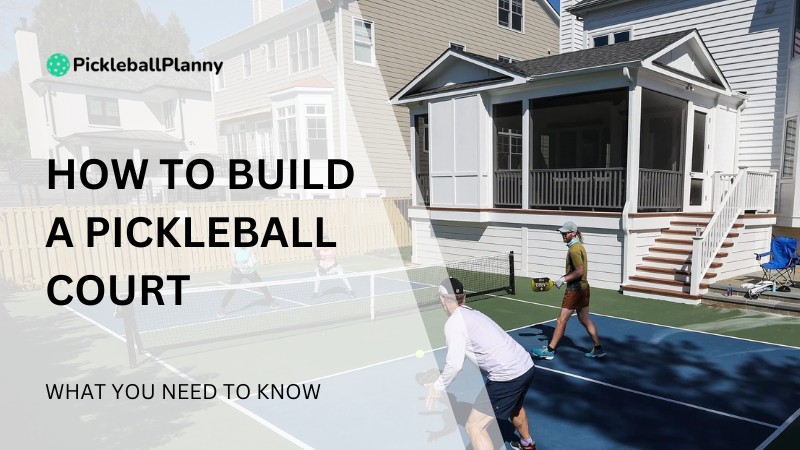Pickleball is a rapidly growing sport that’s enjoyed by people of all ages. With the increasing popularity of the game, many enthusiasts are looking to build their own pickleball courts. How to build a Pickleball court? Whether you’re planning to construct a court in your backyard or a community space, here’s what you need to know to get started.
Benefits of Having Your Own Pickleball Court
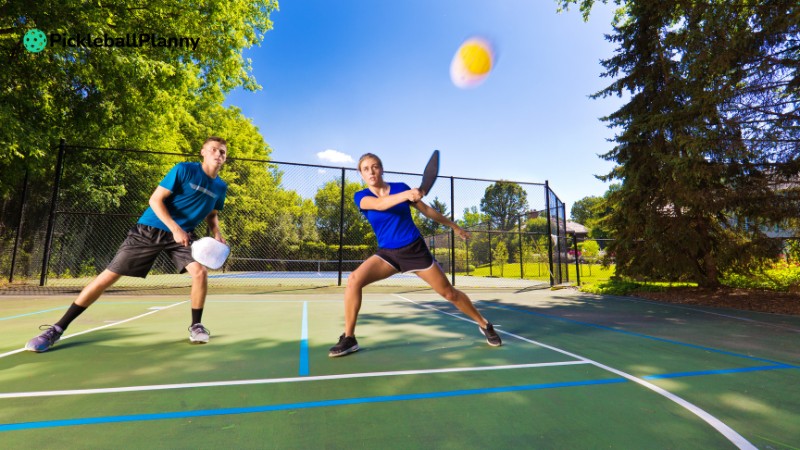
Pickleball is a racket sport that combines elements of tennis, badminton, and ping-pong. It is typically played on a court with similar dimensions to a badminton court, using a paddle and a perforated plastic ball.
In recent years, pickleball has experienced a surge in popularity, attracting players of all ages and skill levels. Its easy-to-learn rules and low-impact nature make it an appealing option for recreational and competitive players alike.
Having your own pickleball court provides the convenience of being able to play whenever you want, without having to wait for court availability at public facilities.
While the initial investment may seem significant, building your own pickleball court can ultimately be more cost-effective than paying for court time at public facilities in the long run.
Building your own court allows you to customize it to your preferences, from the surface material to additional amenities like lighting and seating.
How To Build A Pickleball Court
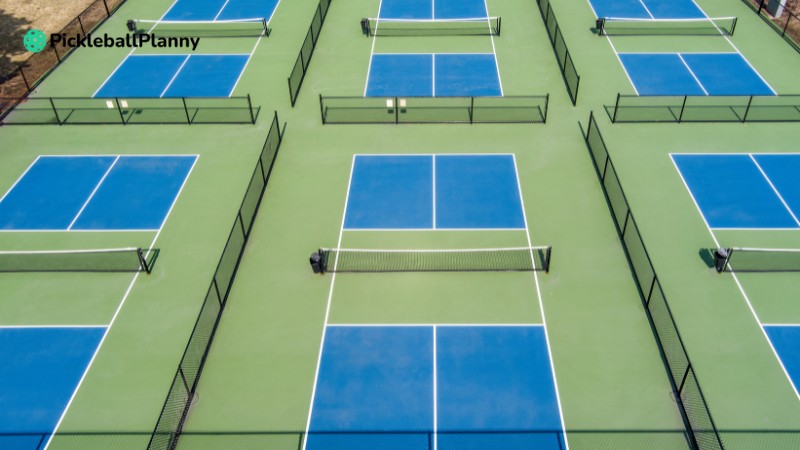
Here’s a general guide on how to build a DIY pickleball court, keeping in mind it’s recommended to consult a professional for complex tasks like groundwork or permits:
Planning Your Pickleball Court
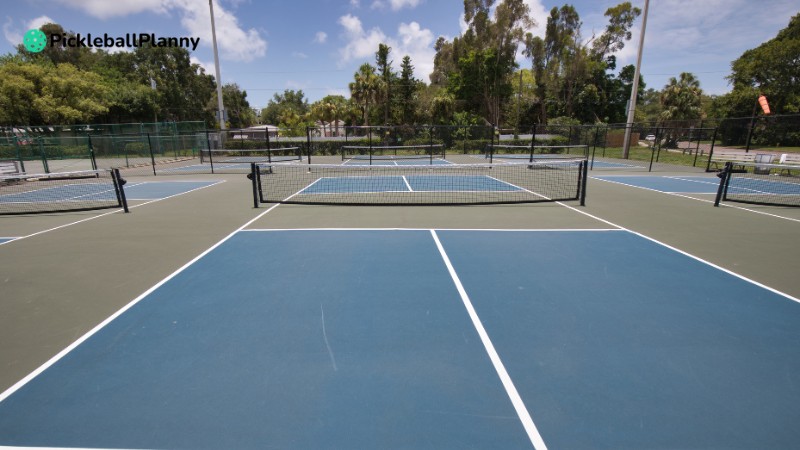
Location Considerations: Choose a location for your pickleball court that is level and free from obstructions. Consider factors such as sunlight exposure and proximity to other structures.
Size Requirements: A standard pickleball court measures 20 feet wide by 44 feet long for singles play, and 34 feet wide by 44 feet long for doubles play.
Surface Options: Popular surface options for pickleball courts include asphalt, concrete, and acrylic coatings. Each has its own advantages in terms of durability, performance, and maintenance.
Explore more information about Pickleball with: Can You Play Pickleball on a Tennis Court? How to play?
Materials and Equipment Needed
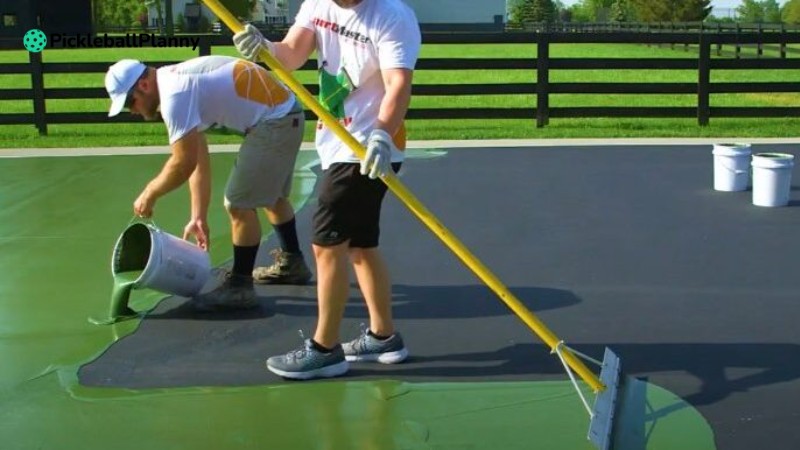
Building a pickleball court can be a fun and rewarding project, but it’s important to have the right materials and equipment on hand before you get started. Here’s a list of what you’ll need:
Depending on the surface option you choose, you’ll need materials such as asphalt, concrete, or acrylic coatings for the court surface.
Invest in a high-quality pickleball net and poles that are designed specifically for pickleball courts, ensuring proper height and tension.
Proper court markings are essential for gameplay. Use paint or tape to mark the boundaries and lines according to official pickleball regulations.
Notes when build a Pickleball court
Prepare the site by clearing any vegetation, leveling the ground, and ensuring proper drainage. Install the chosen surface material according to manufacturer specifications, taking care to achieve a smooth and even surface. Set up the pickleball net and poles according to official regulations, ensuring proper height and tension.
Maintenance Tips
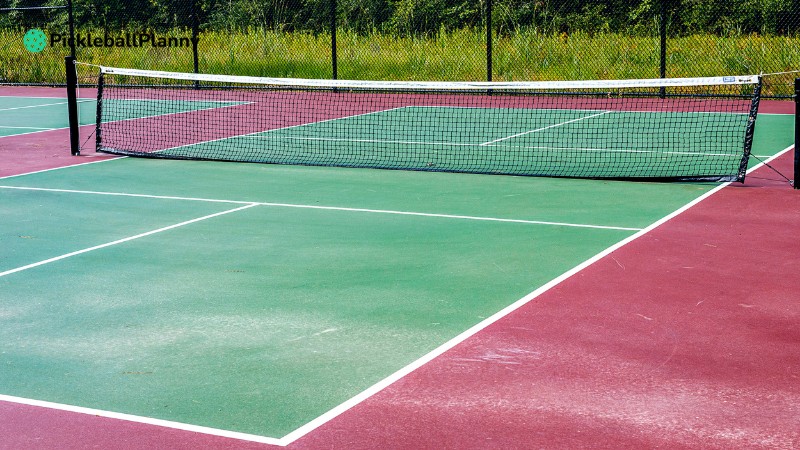
Keep your pickleball court clean by regularly sweeping away debris and dirt. Use mild detergent and water for more thorough cleaning as needed.
Inspect the court surface regularly for any signs of wear or damage, and address any issues promptly to prolong its lifespan. Check the pickleball net and poles regularly for signs of wear or damage, and replace any worn or damaged components as needed.
Additional Considerations
Consider installing lighting for your pickleball court to extend playing hours and enhance visibility during evening games. Fencing around the court can help contain stray balls and provide added safety and privacy. Provide seating options for players and spectators to enhance comfort and enjoyment of the game.
How much does it cost to build a pickleball court?
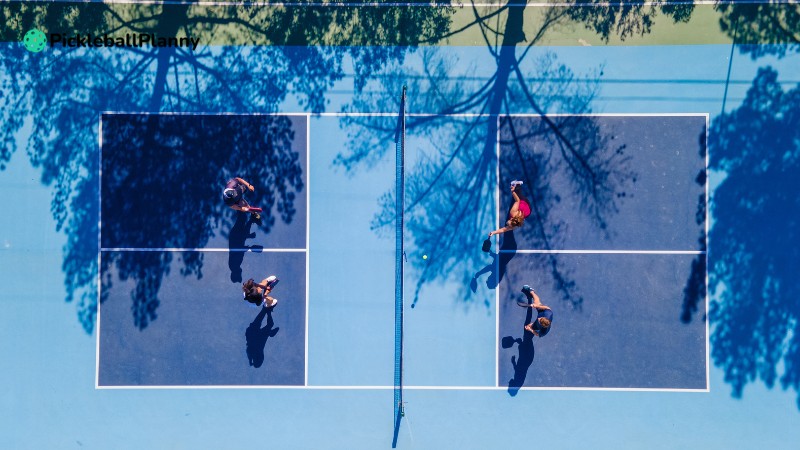
The cost of a backyard pickleball court can vary greatly depending on several factors, but here’s a general idea:
- Ballpark range: $6,800 to $45,000 [US dollars]
There are ways to save money on the court itself, such as skipping the fence if your yard already has good boundaries, but other factors like court surface and labor can also significantly affect the price.
Here are some of the things that can influence the cost:
- Court surface: Concrete or asphalt are common choices, but there are also prefabricated court tiles you can install yourself.
- Size of the court: Regulation size is 44 feet by 20 feet, but some people opt for slightly smaller courts.
- Labor costs: This will depend on your location and whether you hire a contractor or DIY the project.
- Fencing: This is optional, but can be a good idea to keep the ball contained and for safety.
- Lighting: If you want to play at night, you’ll need to factor in the cost of lights and electrical work.
If you’re on a tight budget, you can find ways to save on the court by doing some of the work yourself or choosing a less expensive surface material. But be sure to factor in all the costs before you start your project.
Learn how to play Pickleball with How to Serve in Pickleball: Mastering the Underhand Technique
How to build an outdoor pickleball court?
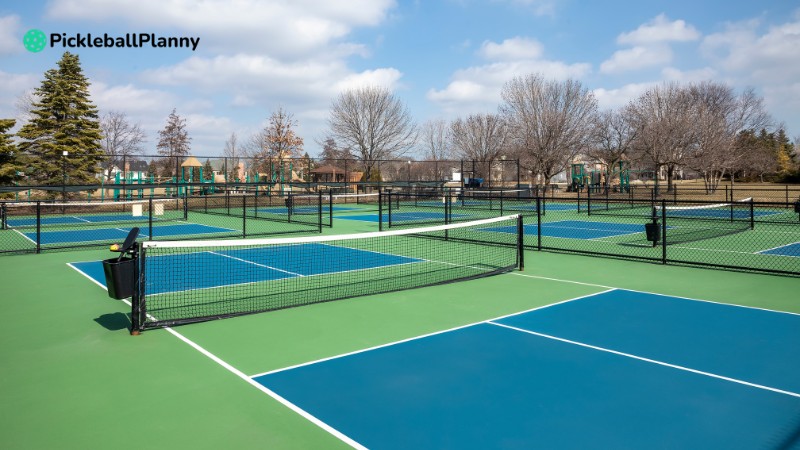
Building an outdoor pickleball court with the help of a contractor can be a great way to ensure a professional and high-quality playing experience. Here’s a breakdown of the process:
Finding a Contractor:
- Search online: Look for contractors in your area who specialize in sports court construction. You can find them through online directories or search terms like “sports court contractor near me” or “pickleball court builder.”
- Ask for recommendations: Talk to friends, family, or neighbors who have had similar projects done. They might have positive experiences with a particular contractor they can recommend.
- Check professional organizations: The American Society for Testing and Materials (ASTM) has a directory of contractors who meet their standards for sports surface construction [ASTM does not maintain a directory of contractors, but their website can connect you with relevant standards].
Getting Quotes:
- Contact multiple contractors: Get quotes from at least 3 different contractors to compare prices and services offered.
- Be prepared to provide details: When contacting contractors, have details ready about the size of the court you envision, any specific features you desire (fencing, lighting), and your budget.
- Ask about qualifications and experience: Ensure the contractors you consider are licensed and insured, and have experience building pickleball courts specifically.
Working with the Contractor:
- Review the contract carefully: Before signing any contract, make sure you understand all the details, including the scope of work, materials to be used, timeline for completion, and warranty information.
- Get everything in writing: Have any changes or additions to the original plan documented and agreed upon in writing before the work starts.
- Schedule inspections: Depending on your local building codes, there might be inspections required during different stages of construction. Coordinate these inspections with your contractor.
Benefits of Hiring a Contractor:
- Expertise: Contractors have the knowledge and experience to build a court that meets all safety and regulation standards.
- Quality materials: They can source high-quality materials specifically designed for outdoor pickleball courts, ensuring durability and performance.
- Efficiency: Contractors can complete the project faster and with less hassle than a DIY approach.
- Permits and inspections: They can handle obtaining any necessary permits and scheduling inspections with local authorities.
By following these steps and carefully selecting a qualified contractor, you can ensure a smooth and successful experience building your dream outdoor pickleball court.
Conclusion
Building your own pickleball court can be a rewarding endeavor that provides hours of enjoyment for you, your family, and your friends. By following the steps outlined in this guide, you can create a high-quality court that meets your needs and enhances your pickleball experience.
FAQs about Build Pickleball Court
Can I use any type of surface for my pickleball court?
While there are various surface options available, it’s essential to choose one that meets official pickleball regulations in terms of performance and durability.
Do I need any special skills or equipment to build a pickleball court?
While some DIY skills may be helpful, many aspects of building a pickleball court can be outsourced to professionals, such as surface installation and court marking.
How much space do I need to build a pickleball court?
A standard pickleball court requires a minimum space of 30 feet by 60 feet, but additional space may be needed for fencing and other amenities.
What is the typical lifespan of a pickleball court?
With proper maintenance, a pickleball court can last anywhere from 5 to 15 years or more, depending on factors such as surface material and usage intensity.
Are there any regulations or permits I need to consider before building a pickleball court?
Depending on your location and local regulations, you may need to obtain permits before constructing a pickleball court, especially if it involves significant modifications to your property.

